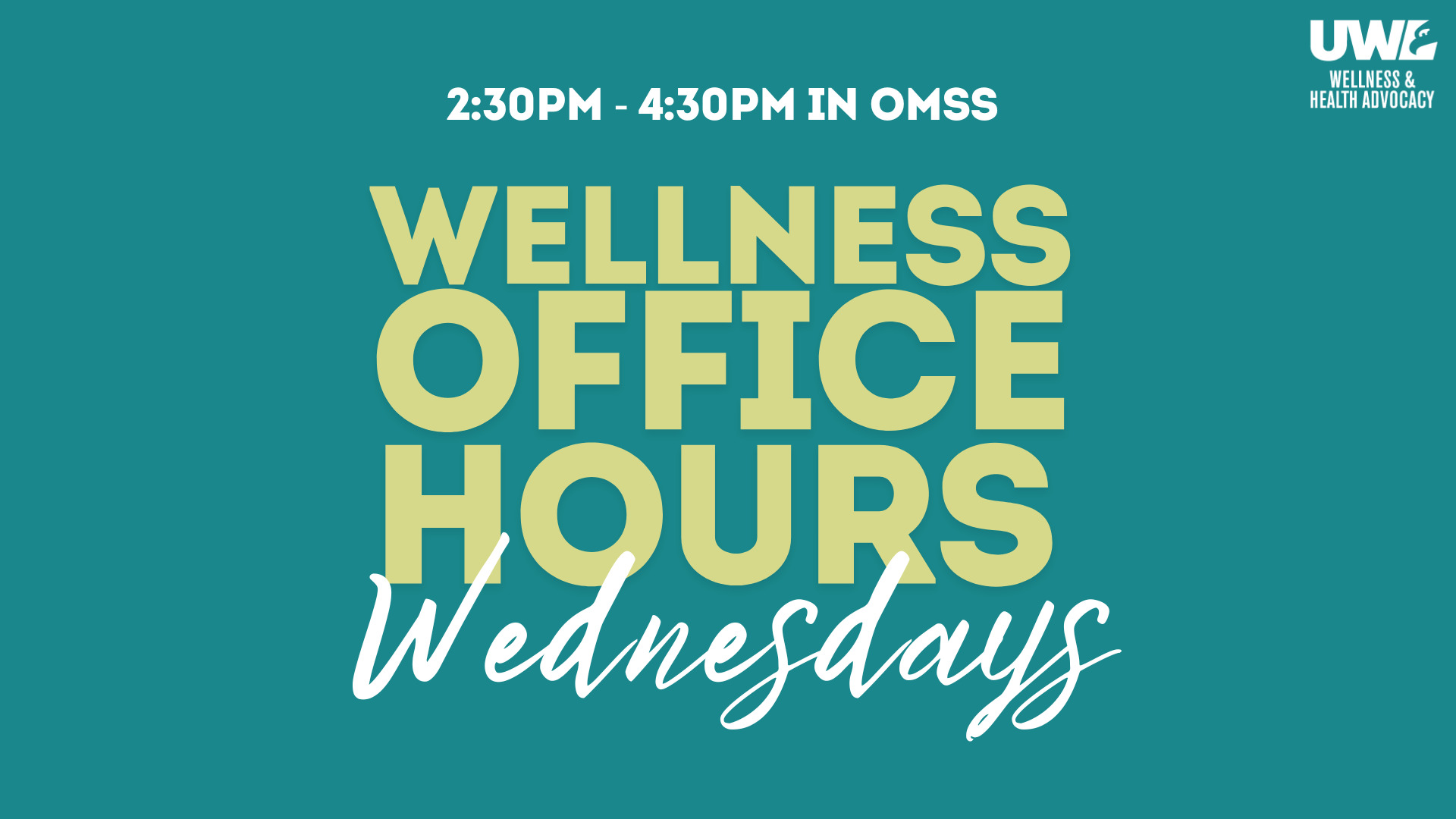Equity Liaison Initiative
A page within Diversity & Inclusion
What is the Equity Liaison Initiative?
The Equity Liaison Initiative is a strategic, cooperative, campus-wide effort to identify and close equity gaps affecting students and employees.
The equity liaison is a faculty or staff member designated within each unit who analyzes and interprets equity data, gathers relevant resources, and advocates for evidence-based strategies to help their unit better anticipate and address these equity gaps.
What are the duties/responsibilities of the Equity Liaison?
The equity liaisons help build awareness of the unit’s role in UWL’s mission to provide an equitable and inclusive educational and workplace environment for all by:
- advocating for best practices using unit-specific research and resources;
- helping prompt discussion in the unit on equity conditions and needs;
- conveying information about equity gaps specific to the unit;
- cultivating a climate of shared responsibility for equity and diversity.
Steering Committee Members
- Vice Chancellor
- 412B Wimberly Hall
- snarcotta-welp@uwlax.edu
- 608.785.8534
- Vice Chancellor
- 404B Wimberly Hall
- vfigueroa@uwlax.edu
- 608.785.8062
- Assistant Vice Chancellor
- 412C Wimberly Hall
- nheard@uwlax.edu
- 608.785.5057
- Associate Professor
- 4310 Centennial Hall
- aedwards@uwlax.edu
- 608.785.6723
- Director Center Transformative Justice
- 1131 Centennial Hall
- anowak2@uwlax.edu
- 608.785.5093
- Interim Assistant Dean
- 105D Graff Main Hall
- wgeorge@uwlax.edu
- 608.785.5107
Frequently Asked Questions
What is an "equity gap"?
An equity gap is a systemic disparity in access, retention, or achievement that adversely affects students and/or employees of under-represented or under-served populations at UWL such as communities of color, women, the LGBT community, people with disabilities, people from low income backgrounds, first-generation students, and veterans. While currently UWL cannot quantify every possible equity gap on campus, the goal of the Equity Liaison Initiative is to address as many as possible.
In higher education, access and retention have specific meanings for shared data related to students. For more information on equity gaps and how they are measured, please refer to the Institutional Research, Assessment and Planning [IRAP] website.
What is an Equity Liaison?
What is an Equity Liaison, and how do they help close equity gaps?
An equity liaison is a faculty or staff member who volunteers within their unit to analyze and interpret equity data, gather relevant resources, and advocate for evidence-based strategies to help their unit better anticipate and address these equity gaps.
What are the duties/responsibilities of the Equity Liaison?
The equity liaisons help build awareness of the unit’s role in UWL’s mission to provide an equitable and inclusive educational and workplace environment for all by:
- advocating for best practices using unit-specific research and resources;
- helping prompt discussion in the unit on equity conditions and needs;
- conveying information about equity gaps specific to the unit;
- cultivating a climate of shared responsibility for equity and diversity.
What their job is NOT:
- doing all the work themselves;
- conflict resolution/intervention;
- personnel matters;
- solving other people’s problems;
- training the department.
How are equity liaisons (EqLs) chosen?
Equity liaisons can be selected by unit directors/chairs based on individual willingness and capacity to serve. While continuity is important, there is no fixed term for the equity liaison role. Units are encouraged to establish fair and transparent processes for internal selection and rotation of equity liaisons. Units may also establish an equity committee which collectively performs the liaison duties.
What is the role of the unit director/chair?
While the liaison is responsible for the effort they put into the duties listed above, the chair/director is ultimately responsible for supporting equity-related action steps and for the closure of unit-level equity gaps.
Chairs and directors should support their unit’s equity liaison by:
- prioritizing the unit’s engagement with UWL’s mission to provide an equitable and inclusive educational and workplace environment for all;
- collaborating with the equity liaison and other colleagues on the unit’s IE/equity plan;
- engaging in regular dialog with the liaison regarding the unit’s ongoing and new equity efforts;
- providing a platform for the liaison to present to the unit and/or facilitate dialog with the unit as a whole regarding ongoing or new equity issues and goals;
- lending authority/protection/support to equity liaison as needed to ensure the liaison has the ability to be an effective advocate and change agent within the unit;
- fostering an environment of shared responsibility and accountability within the unit.
What is the role of Vice Chancellors and Deans?
Vice Chancellors and Deans should support equity liaisons in their Division/College by:
- holding Directors and Chairs accountable for their unit-level equity efforts;
- helping to link Directors, Chairs and equity liaisons to other resources on campus;
- communicating to wider audiences about the importance of equity issues to the Division/College/University mission;
- in cases where an equity liaison does not feel supported by their Chair or Director, advising and lending authority/protection/support as needed to ensure that the liaison has the ability to be an effective advocate and change agent.
What is the role of the Steering Committee?
The members of the Equity Liaison Steering Committee will support all equity liaisons by:
- providing and helping to contextualize data;
- providing opportunities for liaisons to connect to one another and to campus resources;
- identifying and responding to training needs of liaisons;
- keeping campus leadership informed and advocate for ongoing needs of the ELI to upper administration;
- reporting more broadly to the campus community about the initiative’s progress;
- integrating ELI to other strategic planning efforts/committees on campus;
- providing feedback to liaisons on IE and Equity Plans;
- providing professional development for equity liaisons by securing resources, bringing outside speakers to campus, and organizing workshops;
- collaborating with Vice Chancellors/Deans to facilitate division/college/university-wide dialog regarding equity issues;
- serving as a sounding board for liaisons to help develop effective strategies to address emerging challenges.
Resources for Equity Liaisons
Data Sources
STUDENT DATA – UWL DATA
- UWL Academic Department Equity Liaison Data
- Access to data (requires UWL NetID) on academic departments
- Profiles of lower division courses (percentage of first generation, Pell Recipients, Gender, and Race/Ethnicity) by department
- Retention rates by department
- Grade profiles in lower division courses by department
- Enrollments by major
- Access to data (requires UWL NetID) on academic departments
- UW System Accountability Report - UW System performance measures across campuses
-
- Information on student access (total enrollments, where students come from, participation of Wisconsin high school graduates, new transfer students, and access for underrepresented and lower-income students).
-
FACULTY/STAFF - UWL DATA
- UW System Accountability Report
- Includes system and campus specific information on faculty and staff (number of employees, employee diversity, faculty compensation, faculty turnover, and instructional workload)
- UWL Human Resources
- UWL specific data associated with headcounts, demographics, pay, etc.
- AAO (Affirmative Action Data)
- Affirmative Action summary tables show race and gender data across all UWL employees with breakdowns by rank for faculty - 2022 Affirmative Action Summary.
- 2021 Affirmative Action Summary
- Past data (years 2015, 2016, & 2017 available)
- Due to a mismatch between current and past data coding and concerns regarding inaccuracies in data, AAO data is unavailable for the years 2018-2020.
- Affirmative Action summary tables show race and gender data across all UWL employees with breakdowns by rank for faculty - 2022 Affirmative Action Summary.
- Recruitment & Applicant Data
- On the Canvas site associated with bias training for Search & Screen committees, there is an AAO/EEO dashboard associated with utilization goals indicating areas of growth, recruitment associated with UWL’s diversity plans. These data are based on Federal comparisons and provide a high-level overview by job category.
- Applicant data. Traditionally fewer than 20% answer the EEO/AAO demographic data on the application form. Once hired, employees are strongly encouraged to provide the data to enhance EEO/AAO data reporting. Therefore, analyzing the diversity of application pools is challenging.
- Exit Interview Results
- When an employee leaves UWL they are provided a link to an online exit interview. If an individual chooses to complete the measure (~50% complete the form), the results go to HR and Affirmative Action. If there are climate concerns raised in the comments, the AAO may choose to share the concerns with the appropriate offices (such as supervisors, dean/directors, and/or the division vice chancellor). This is confidential data that cannot be provided if requested.
Additional data questions?
- Requests regarding faculty/staff data are considered with attention to concerns regarding personal identification information. Identification concerns affect the level of detail we may be able to provide in requests for faculty and staff data. Requests for unit-level data should come from a recognized faculty committee or be associated with a research project. IRB review is needed if data is requested for research purposes. We will abide by the following general guidelines for providing unit-level faculty and staff data:
- Data that will identify individuals will not be provided (names, ID numbers, departments).
- We can only provide college or school level data if the combination of other data items does not potentially identify individuals.
- In general, gender data can be provided at the level of college/school.
- College/school data might not be provided by race/ethnicity due to variation in size. When racial/ethnic data is provided, due to small sample sizes, we may not be able to disaggregate specific racial/ethnic groups.
- Beyond demographic variables, employment or career-related data requests will be reviewed on a case-by-case basis and will be limited to standard faculty/staff career data maintained by HR.
Assessment and Planning Tools
Starting a resource file
Equity Liaisons are encourage to begin compiling a Resource File on issues of equity and inclusion in your department/unit.
Examples of items that would be appropriate to include in your resource file include:
-
Departmental Inclusive Excellence plan.
-
Department/unit annual report, especially if it includes content on equity, diversity, and inclusion issues.
-
Bylaws and guidelines for retention, tenure, promotion, and merit.
-
A list of issues related to equity and inclusion that are topics of discussion or active efforts in your department/unit.
-
Information about what peer institutions are doing to advance equity and inclusion in your field.
-
Academic literature or news articles regarding gender, race, ethnicity, or disability issues in your discipline.
-
Any data sets that your department/unit currently collects or possesses that relate to equity issues. (If there are data sets you don't have yet but would like to have, please make a note of this.)
-
An inventory of existing training or professional development opportunities related to equity, diversity, and inclusion.
-
Information about professional societies that focus on under-served populations in your field.












